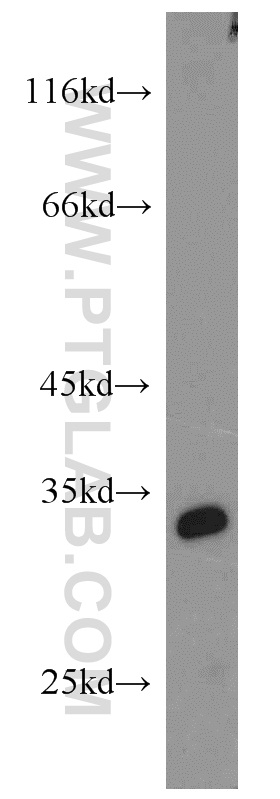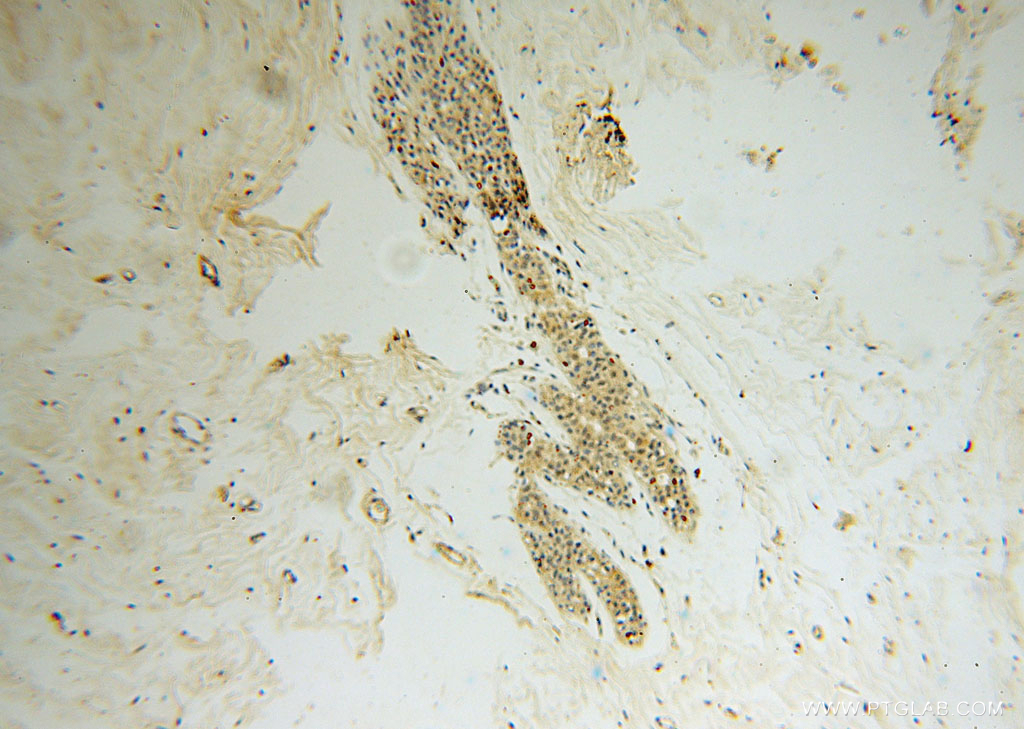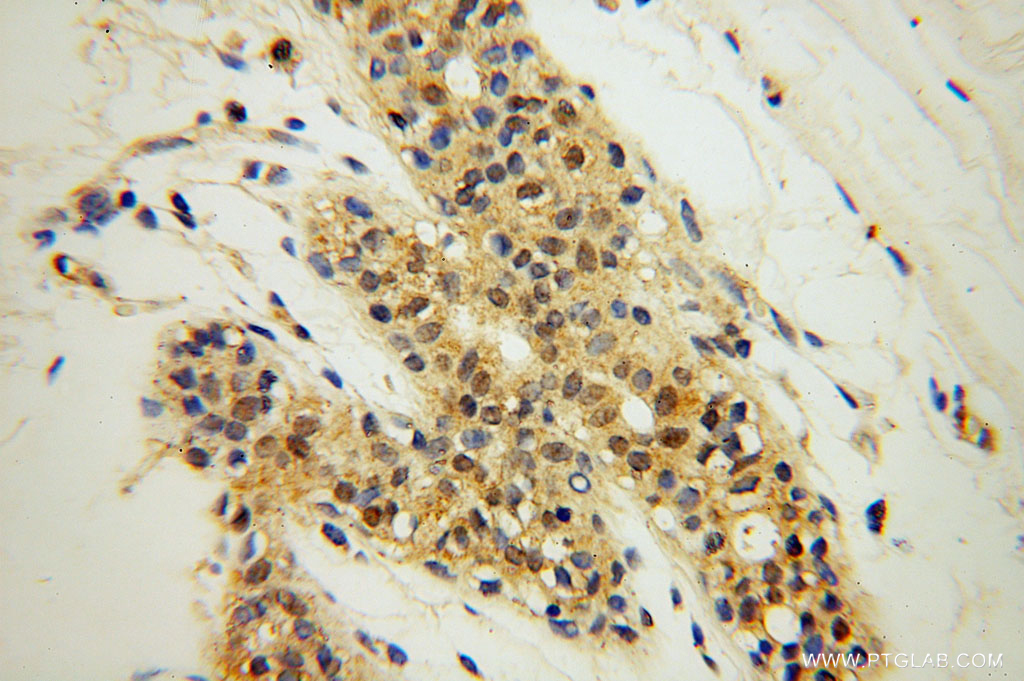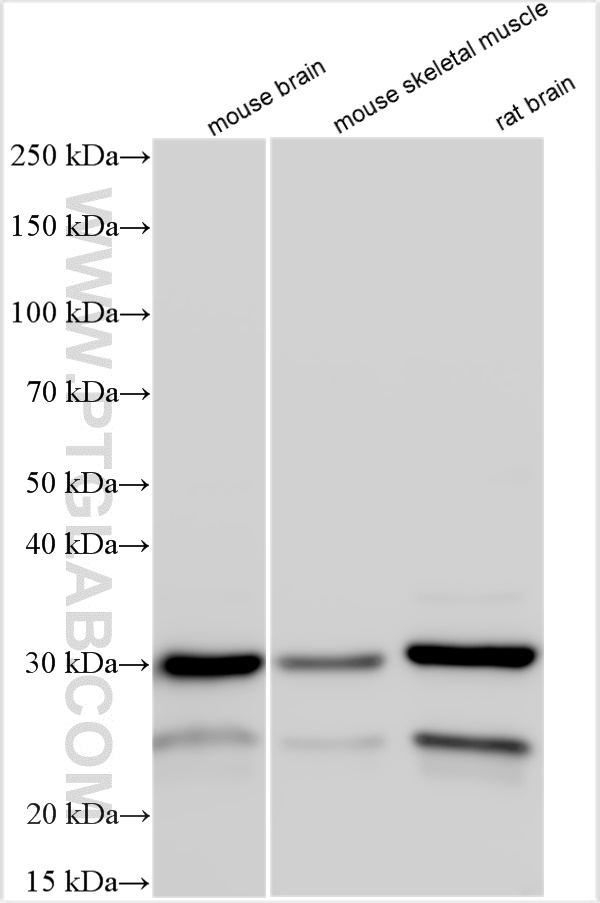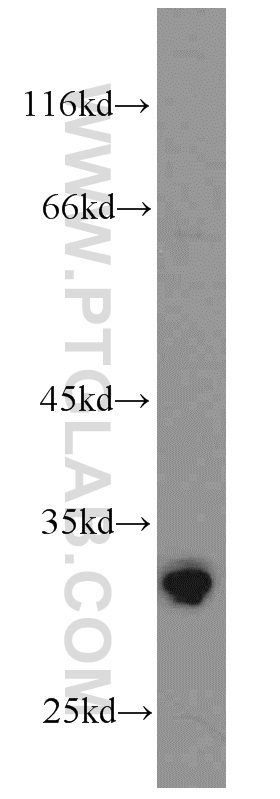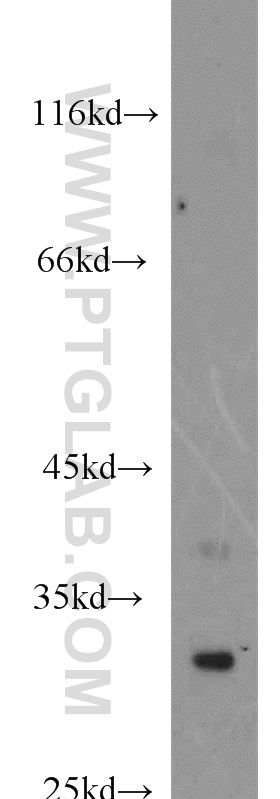验证数据展示
经过测试的应用
| Positive WB detected in | mouse ovary tissue, mouse brain tissue, mouse skeletal muscle tissue, rat brain tissue |
| Positive IHC detected in | human colon cancer tissue Note: suggested antigen retrieval with TE buffer pH 9.0; (*) Alternatively, antigen retrieval may be performed with citrate buffer pH 6.0 |
推荐稀释比
| 应用 | 推荐稀释比 |
|---|---|
| Western Blot (WB) | WB : 1:500-1:2000 |
| Immunohistochemistry (IHC) | IHC : 1:20-1:200 |
| It is recommended that this reagent should be titrated in each testing system to obtain optimal results. | |
| Sample-dependent, Check data in validation data gallery. | |
产品信息
16294-1-AP targets SPAG7 in WB, IHC, ELISA applications and shows reactivity with human, mouse, rat samples.
| 经测试应用 | WB, IHC, ELISA Application Description |
| 经测试反应性 | human, mouse, rat |
| 免疫原 |
CatNo: Ag9471 Product name: Recombinant human SPAG7 protein Source: e coli.-derived, PET28a Tag: 6*His Domain: 1-227 aa of BC011934 Sequence: MADLLGSILSSMEKPPSLGDQETRRKAREQAARLKKLQEQEKQQKVEFRKRMEKEVSDFIQDSGQIKKKFQPMNKIERSILHDVVEVAGLTSFSFGEDDDCRYVMIFKKEFAPSDEELDSYRRGEEWDPQKAEEKRKLKELAQRQEEEAAQQGPVVVSPASDYKDKYSHLIGKGAAKDAAHMLQANKTYGCVPVANKRDTRSIEEAMNEIRAKKRLRQSGEELPPTS 种属同源性预测 |
| 宿主/亚型 | Rabbit / IgG |
| 抗体类别 | Polyclonal |
| 产品类型 | Antibody |
| 全称 | sperm associated antigen 7 |
| 别名 | ACRP, FSA 1, SPAG7, sperm associated antigen 7 |
| 计算分子量 | 227 aa, 26 kDa |
| 观测分子量 | 26-31 kDa |
| GenBank蛋白编号 | BC011934 |
| 基因名称 | SPAG7 |
| Gene ID (NCBI) | 9552 |
| RRID | AB_2302478 |
| 偶联类型 | Unconjugated |
| 形式 | Liquid |
| 纯化方式 | Antigen affinity purification |
| UNIPROT ID | O75391 |
| 储存缓冲液 | PBS with 0.02% sodium azide and 50% glycerol, pH 7.3. |
| 储存条件 | Store at -20°C. Stable for one year after shipment. Aliquoting is unnecessary for -20oC storage. |
背景介绍
SPAG7 encodes the sperm-associated antigen 7, which is widely expressed. The SPAG7 protein contains two nuclear localisation signals and a R3H domain. The domain is predicted to bind ssDNA or ssRNA in a sequence-specific manner. This might indicate a potential role of the protein in response to viruses or free DNAs or RNAs.
实验方案
| Product Specific Protocols | |
|---|---|
| IHC protocol for SPAG7 antibody 16294-1-AP | Download protocol |
| WB protocol for SPAG7 antibody 16294-1-AP | Download protocol |
| Standard Protocols | |
|---|---|
| Click here to view our Standard Protocols |

